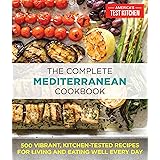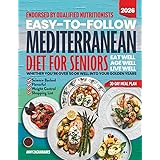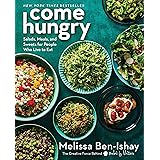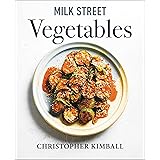The world of nutrition is constantly evolving. It often features new trends and diets. Social media frequently highlights various eating approaches. Protein intake is a popular topic. Many discussions focus on high protein consumption. However, experts stress the importance of balance. The video above sheds light on this crucial balance. It helps clarify how much protein the average person truly needs. This guide expands on those insights. It offers a deeper look into optimal protein intake. It also emphasizes a holistic approach to diet.
Understanding Your Daily Protein Needs
Protein is a vital macronutrient. It helps build and repair tissues. Muscle maintenance heavily relies on it. Sources like lean meats are excellent. Chicken, eggs, and legumes also provide protein. Yet, it should not dominate your plate. Balance with other nutrients is key. Michelle Cardel, a dietitian with Weight Watchers International, highlights this. She advises on appropriate protein amounts for various individuals.
Actual protein needs can differ greatly. Age plays a significant role. Your body composition also matters. Activity level is another important factor. Health goals also influence requirements. A good guideline exists for sedentary adults. They typically need about one gram of protein. This is per kilogram of body weight. For example, a 150-pound person needs approximately 68 grams daily. This provides essential amino acids. These amino acids support bodily functions.
However, requirements increase for certain groups. More active individuals benefit from higher protein. Older adults also need increased protein. This helps combat muscle loss, or sarcopenia. Those seeking weight loss may also benefit. Protein boosts satiety, helping reduce overall calorie intake. Furthermore, individuals building or preserving muscle need more. This supports muscle protein synthesis. Studies show higher protein intake aids muscle repair and growth after exercise.
Beyond the Hype: The Role of Fiber and Healthy Fats
Protein often gets significant attention. Yet, other nutrients are equally vital. Fiber is often overlooked. Michelle Cardel refers to fiber as “the unsung hero.” It deserves considerable focus. Fiber aids digestive health. It promotes regular bowel movements. It also helps control blood sugar levels. Soluble fiber can lower cholesterol. Data from studies link high fiber intake to reduced risk of heart disease. It also fosters a healthy gut microbiome.
Healthy fats are another crucial component. They contribute to heart health. Brain function also relies on them. These fats aid in nutrient absorption. They help absorb fat-soluble vitamins (A, D, E, K). Good sources include olive oil, avocados, and nuts. Including healthy fats promotes satiety. It also reduces inflammation. A balanced diet incorporates these elements seamlessly. Focusing solely on protein can lead to deficiencies. It misses out on these crucial benefits.
Aim for a diverse range of plant foods. These are rich in fiber. They also provide essential vitamins. Minerals and phytochemicals are abundant in them. These compounds are linked to long-term health benefits. For instance, leafy greens offer significant fiber. Berries provide antioxidants. Whole grains contribute complex carbohydrates and fiber. Combining these with protein optimizes nutritional intake. It creates a robust dietary foundation.
The Pitfalls of Restrictive Diets
Current diet trends can be concerning. The carnivore diet is one example. It consists solely of animal products. This approach is extremely restrictive. It cuts out nearly all plant foods. This eliminates crucial nutrient sources. Plant foods are rich in fiber. They contain vital vitamins and minerals. They also offer protective phytochemicals. These are linked to robust long-term health outcomes. Removing them creates nutritional gaps.
Such restrictive diets carry risks. They can lead to nutrient deficiencies. For example, Vitamin C is often scarce in animal products. Fiber is entirely absent. This can impair gut health. It also increases constipation risk. Furthermore, high consumption of red and processed meats has links to certain health issues. Research by organizations like the World Health Organization connects high intake of processed meats to increased cancer risk. A balanced approach avoids these extremes. It supports overall well-being. It also ensures adequate nutrient diversity.
Tailoring Your Protein Intake: Factors to Consider
Individual needs dictate protein intake. As mentioned, age is a factor. Older adults may need more. This preserves muscle mass effectively. Body composition also plays a role. People with more lean muscle require more protein. This supports their metabolic processes. Your activity level is paramount. Endurance athletes need protein for recovery. Strength trainers require it for muscle growth. Their daily intake will exceed that of a sedentary person.
Specific health goals also guide intake. Weight loss is a common goal. Higher protein diets can help with this. Protein increases satiety. This reduces overall calorie consumption. It also helps preserve lean muscle mass. This is important during calorie restriction. For instance, a meta-analysis in the American Journal of Clinical Nutrition showed that higher protein intakes improved body composition during weight loss. Athletes aiming for peak performance often adjust protein timing. They consume protein before and after workouts. This optimizes recovery and repair. Consulting a dietitian can provide personalized guidance. This ensures you meet your specific needs.
Smart Protein Choices and Meal Planning
Distributing protein throughout the day is beneficial. Aim for 20-30 grams per meal. This helps maximize muscle protein synthesis. This is the process of building new muscle. Consuming sufficient protein at each meal supports this. This is more effective than front-loading protein. It is also better than consuming it all at once. For instance, a 3-ounce serving of chicken breast provides about 25 grams of protein. A cup of lentils offers around 18 grams.
Diverse protein sources offer varied nutrients. Lean animal proteins are common choices. These include chicken, turkey, and fish. Plant-based proteins are also excellent. Lentils, beans, tofu, and tempeh are good examples. Combining these provides a full amino acid profile. Consider Greek yogurt for breakfast. It can provide 15-20 grams. A snack of cottage cheese or a handful of almonds adds more. This consistent intake supports muscle health. It also aids metabolism and energy levels throughout the day.
Quality of protein sources matters. Opt for whole, unprocessed foods. These often come with additional beneficial nutrients. Processed meats, while high in protein, can be high in sodium and unhealthy fats. Choose lean cuts. Incorporate plant-based options regularly. This strategy enhances overall nutritional quality. It also reduces potential health risks. Focusing on variety ensures you get a wide array of micronutrients. This holistic approach supports optimal health.
Balancing Your Plate for Optimal Health
A truly healthy diet requires balance. It is not just about protein. It involves all macronutrients. Michelle Cardel emphasizes this ideal plate. It includes a lean source of protein. It also features a great source of fiber. And it incorporates some healthy fats. This combination supports heart health. It also promotes brain health. This balanced approach is critical for long-term wellness. It provides all necessary nutrients.
Visualize your plate at each meal. Fill half with non-starchy vegetables. These provide fiber and vitamins. Add a quarter with a lean protein source. The final quarter should be whole grains or healthy starches. Include a source of healthy fats. This might be a drizzle of olive oil. Or it could be a few slices of avocado. This framework helps ensure nutrient diversity. It promotes sustained energy. It also supports disease prevention. Sticking to this balanced model provides adequate protein needs without overdoing it.
Understanding how much protein you really need is simple. It means considering your body and lifestyle. It involves making smart food choices. And it truly means embracing a balanced diet. This ensures you meet your daily protein needs. It also incorporates essential fiber. It includes healthy fats. This comprehensive approach promotes optimal health. It contributes to sustained well-being and vitality.











